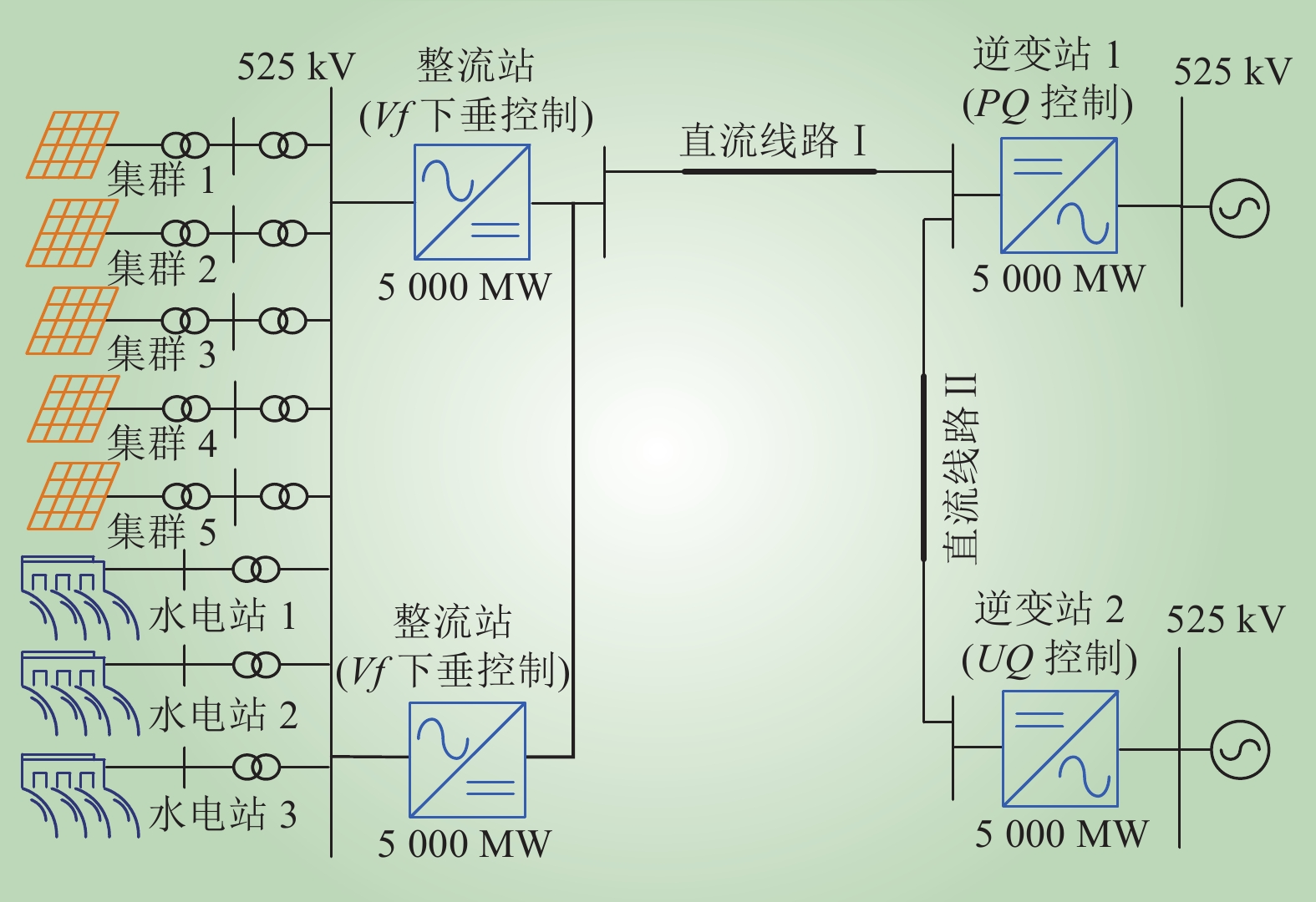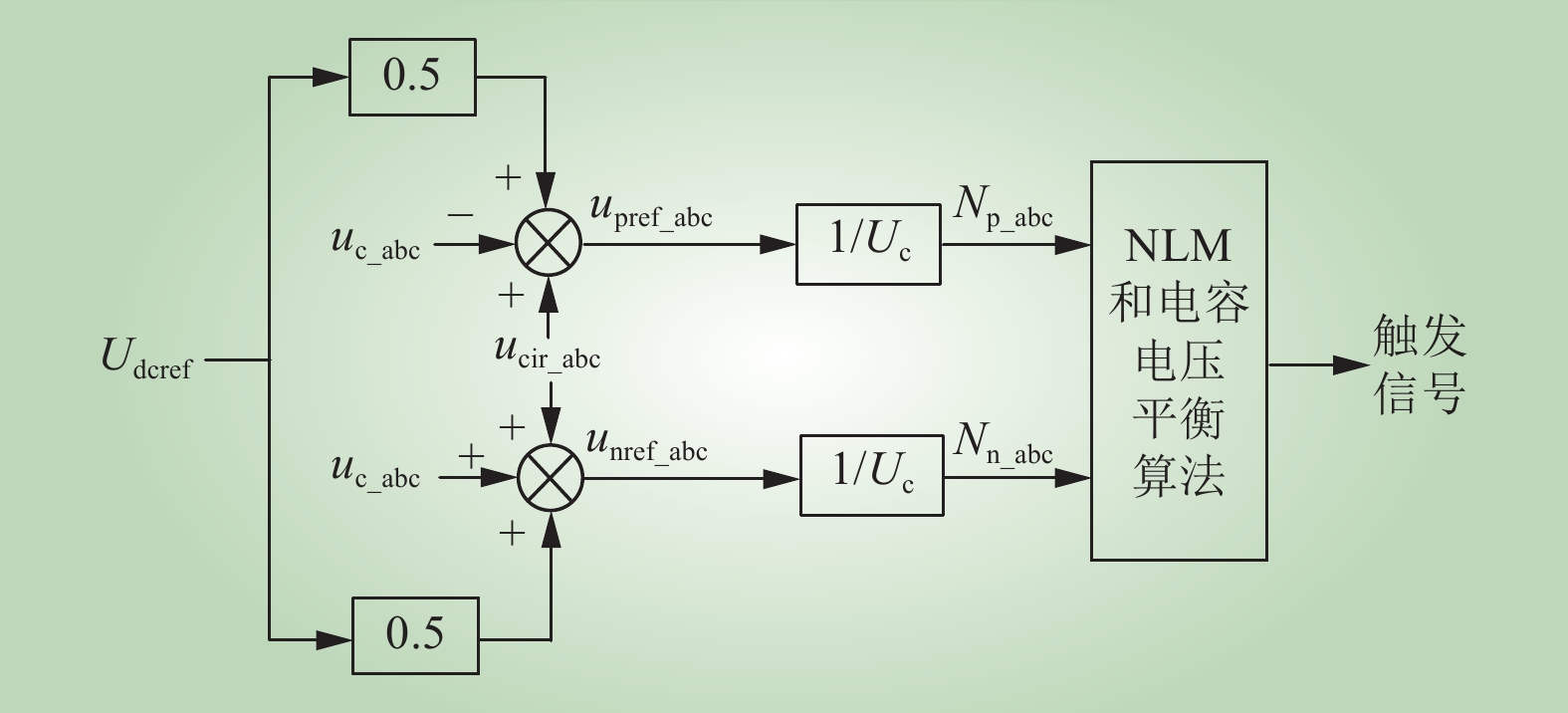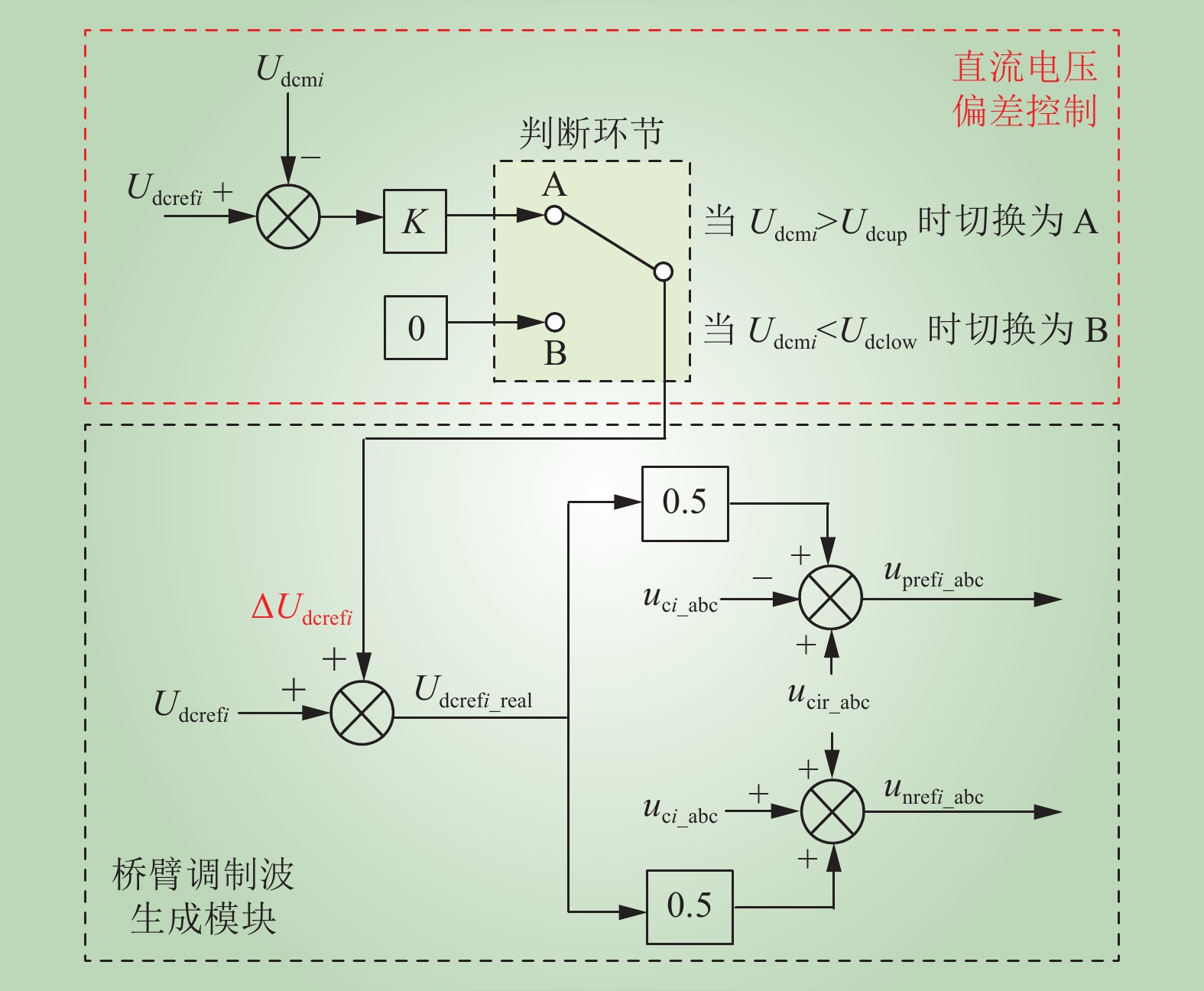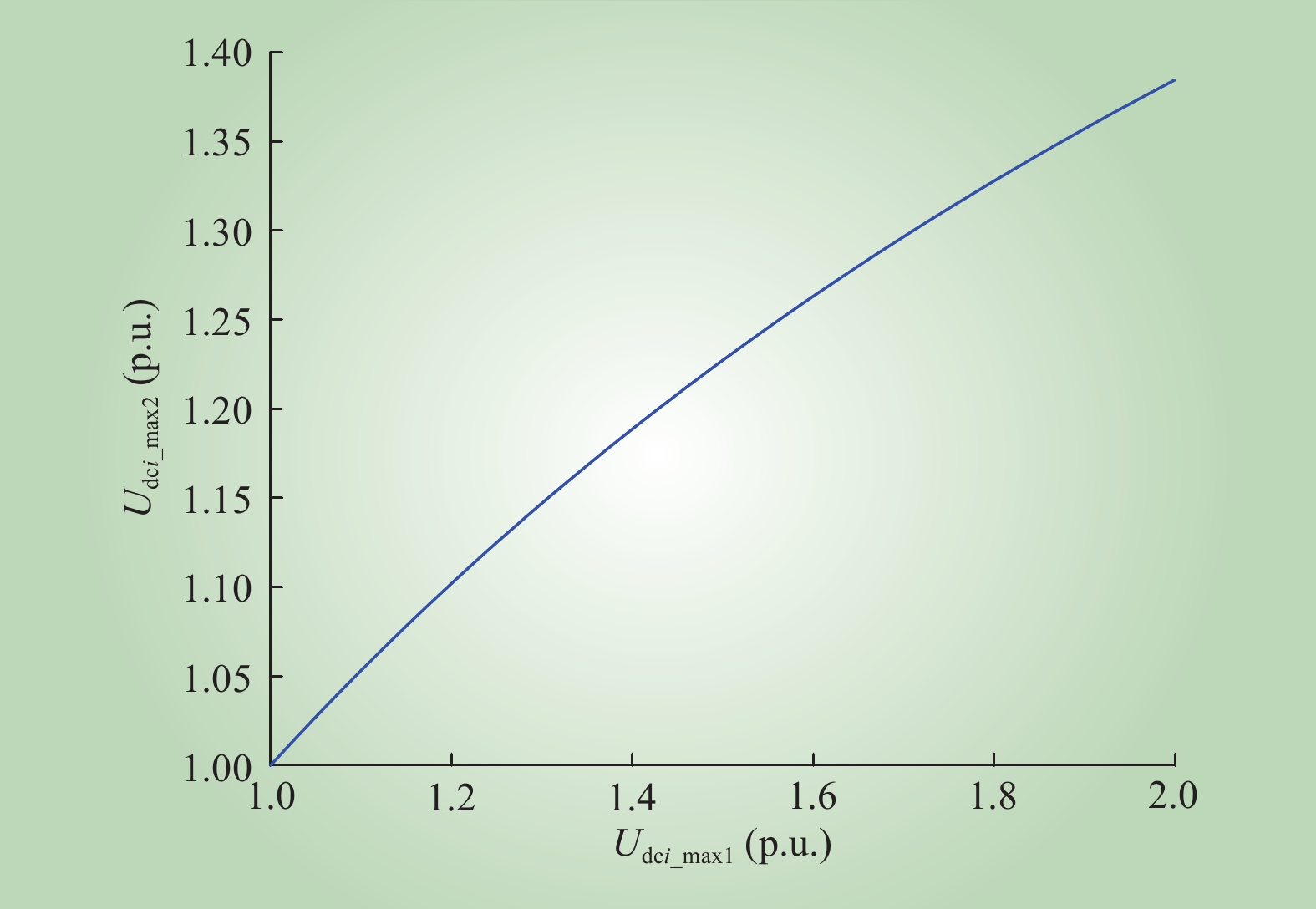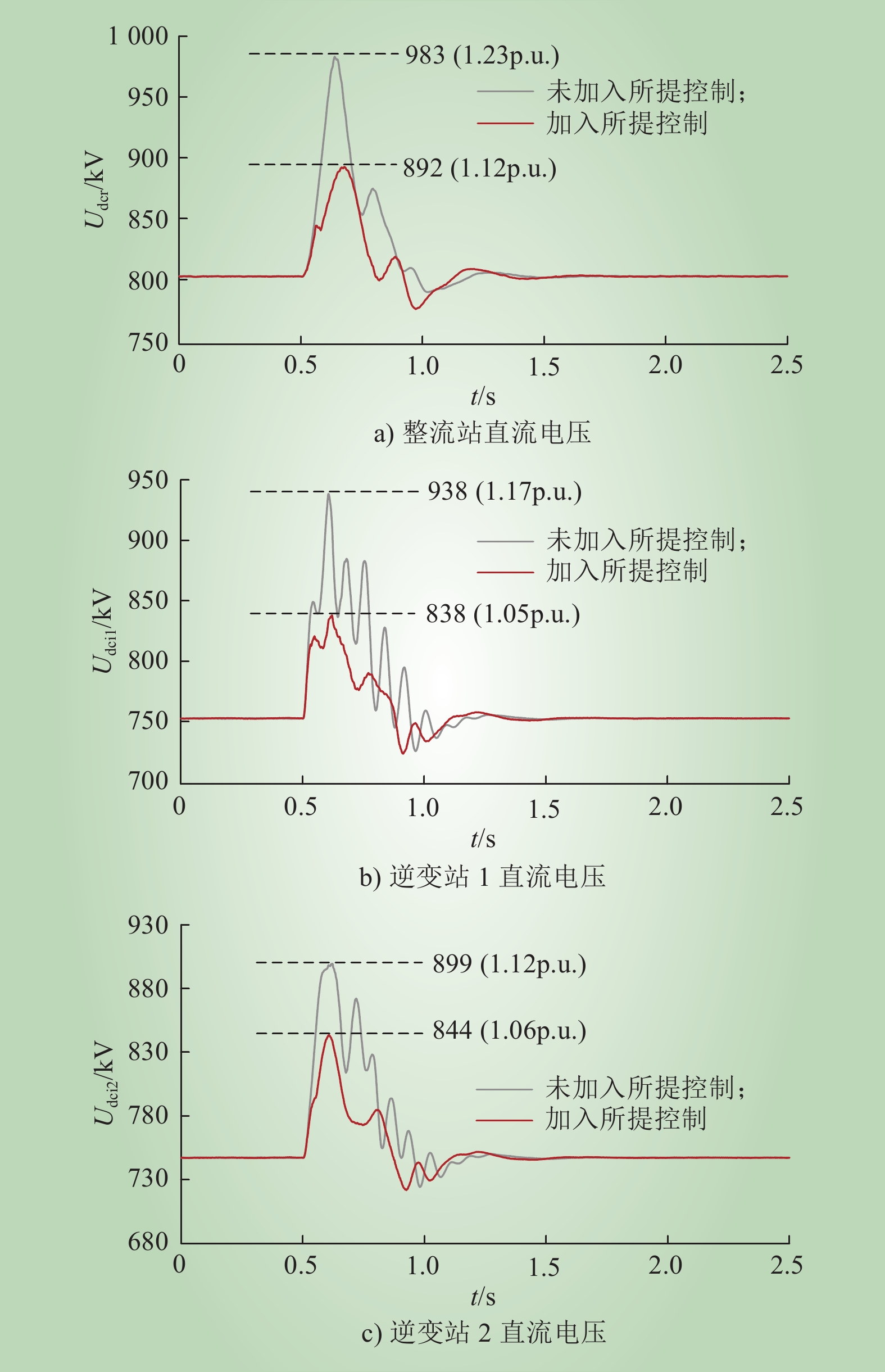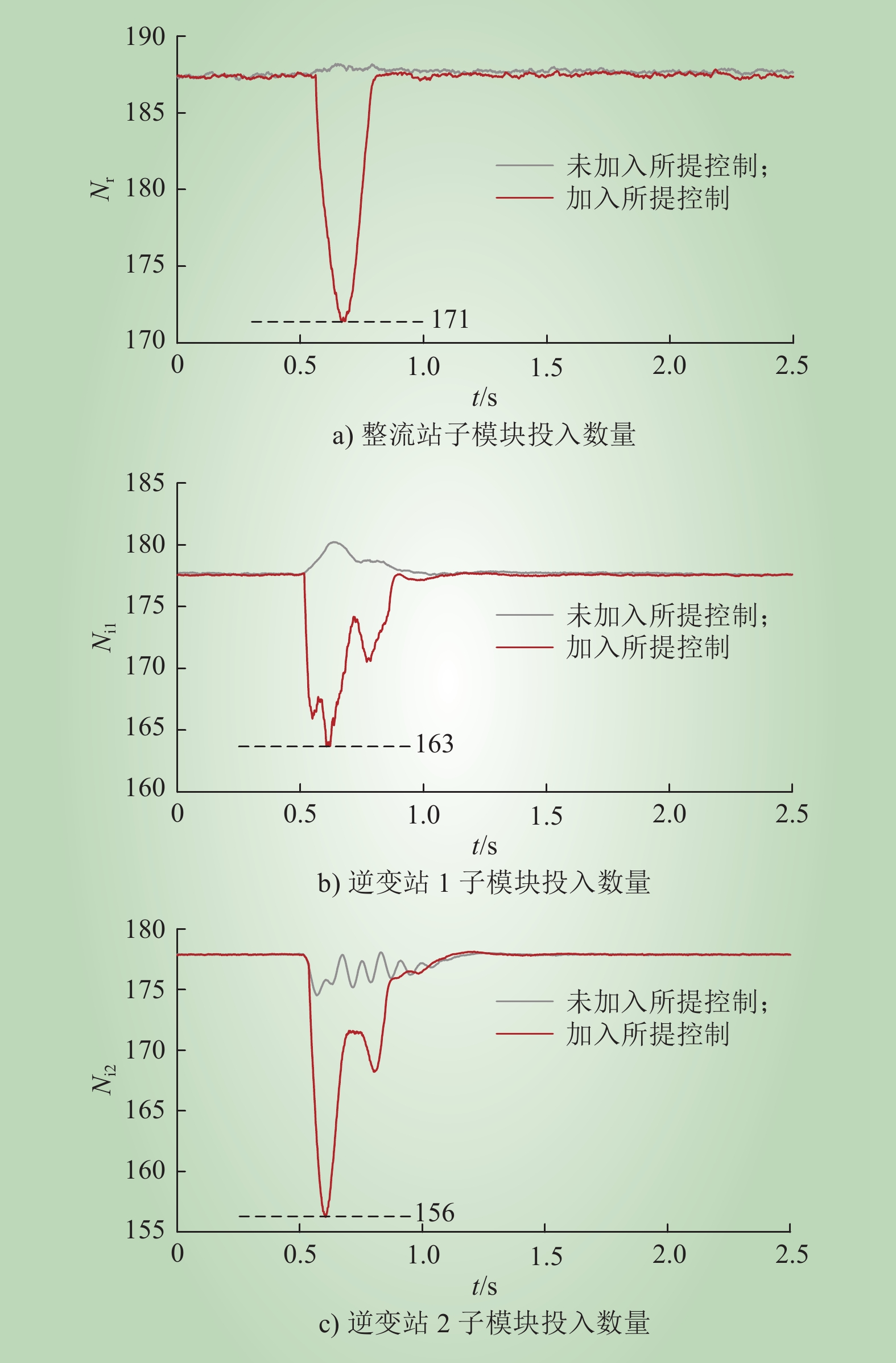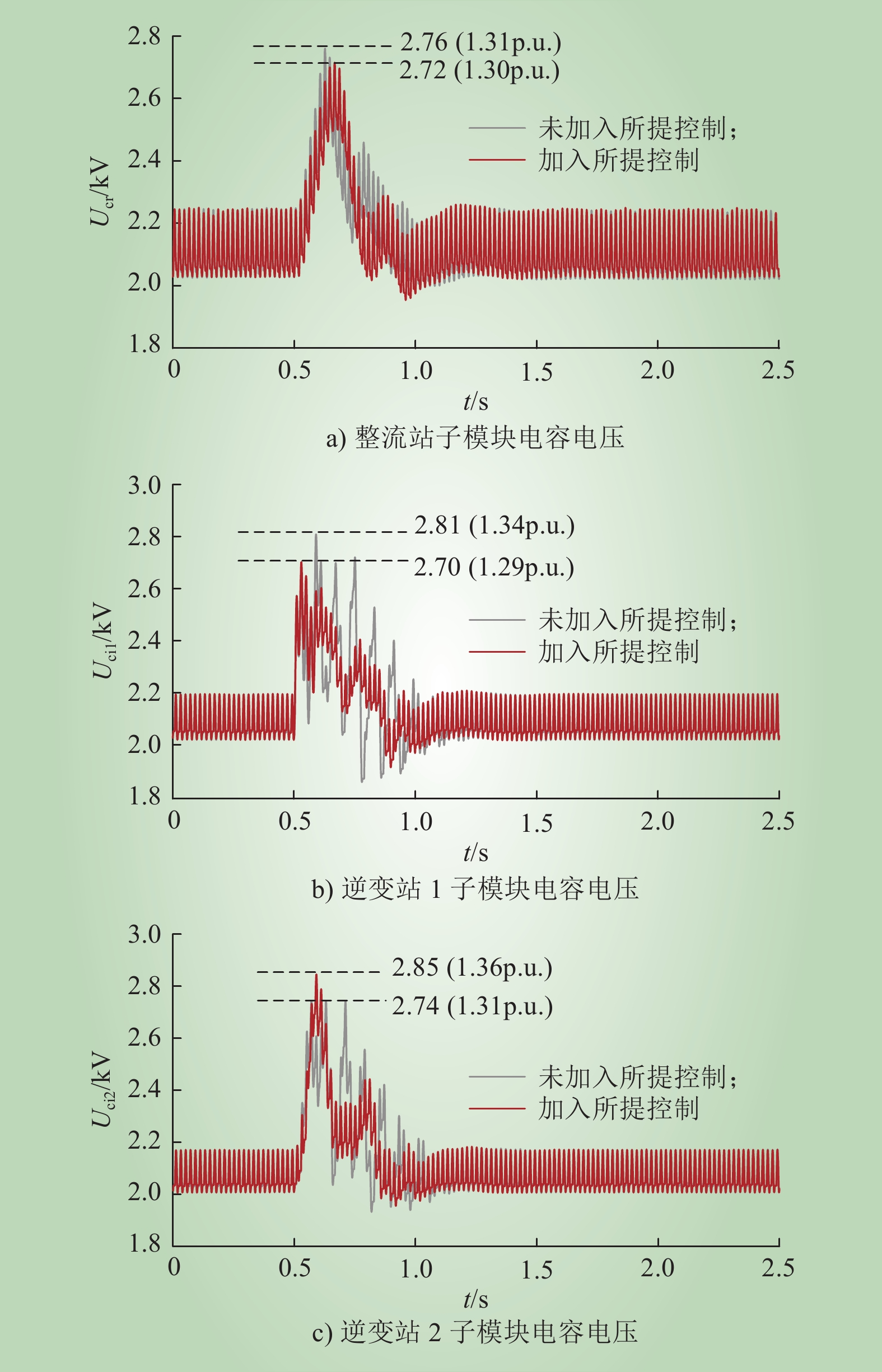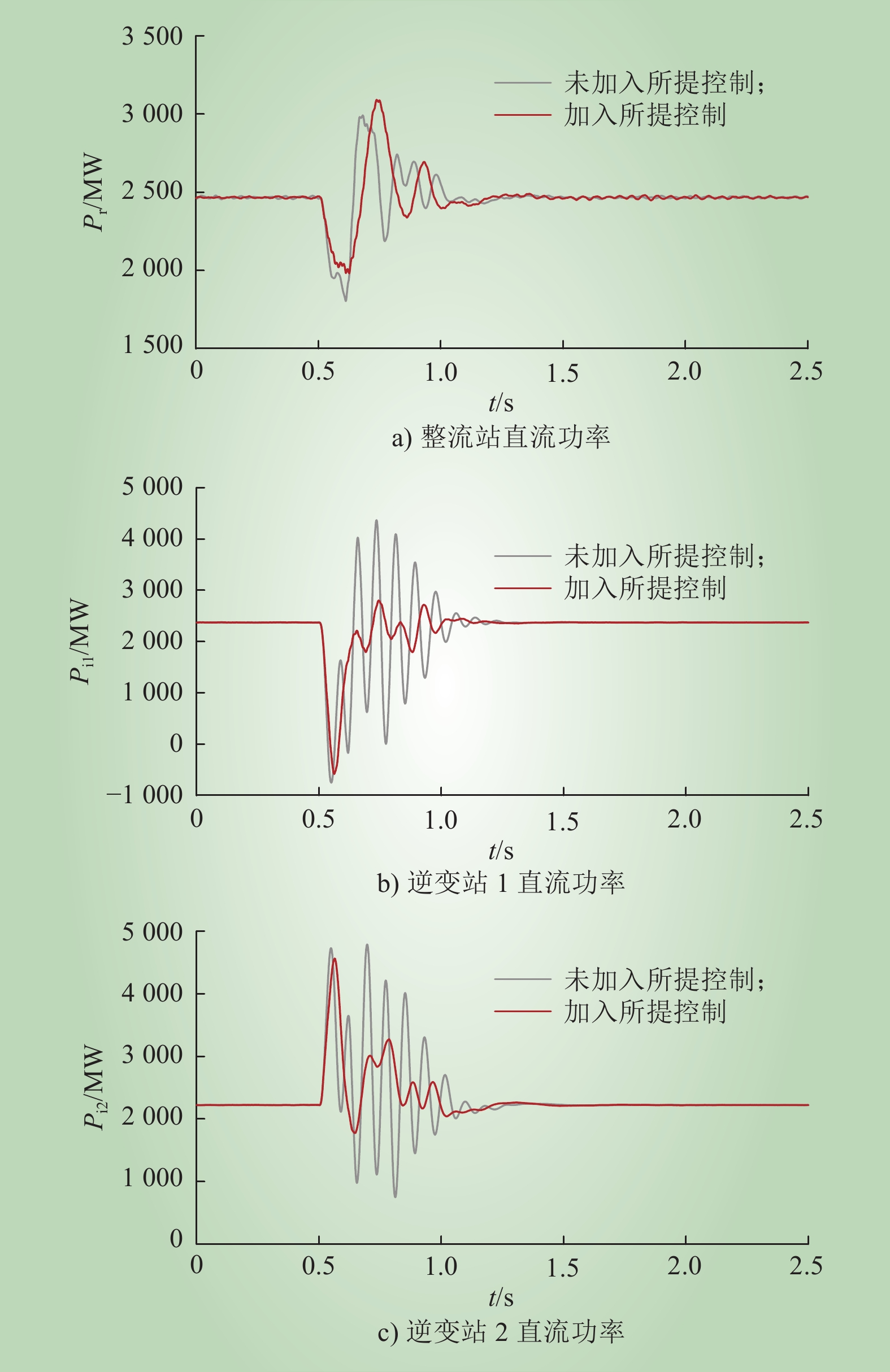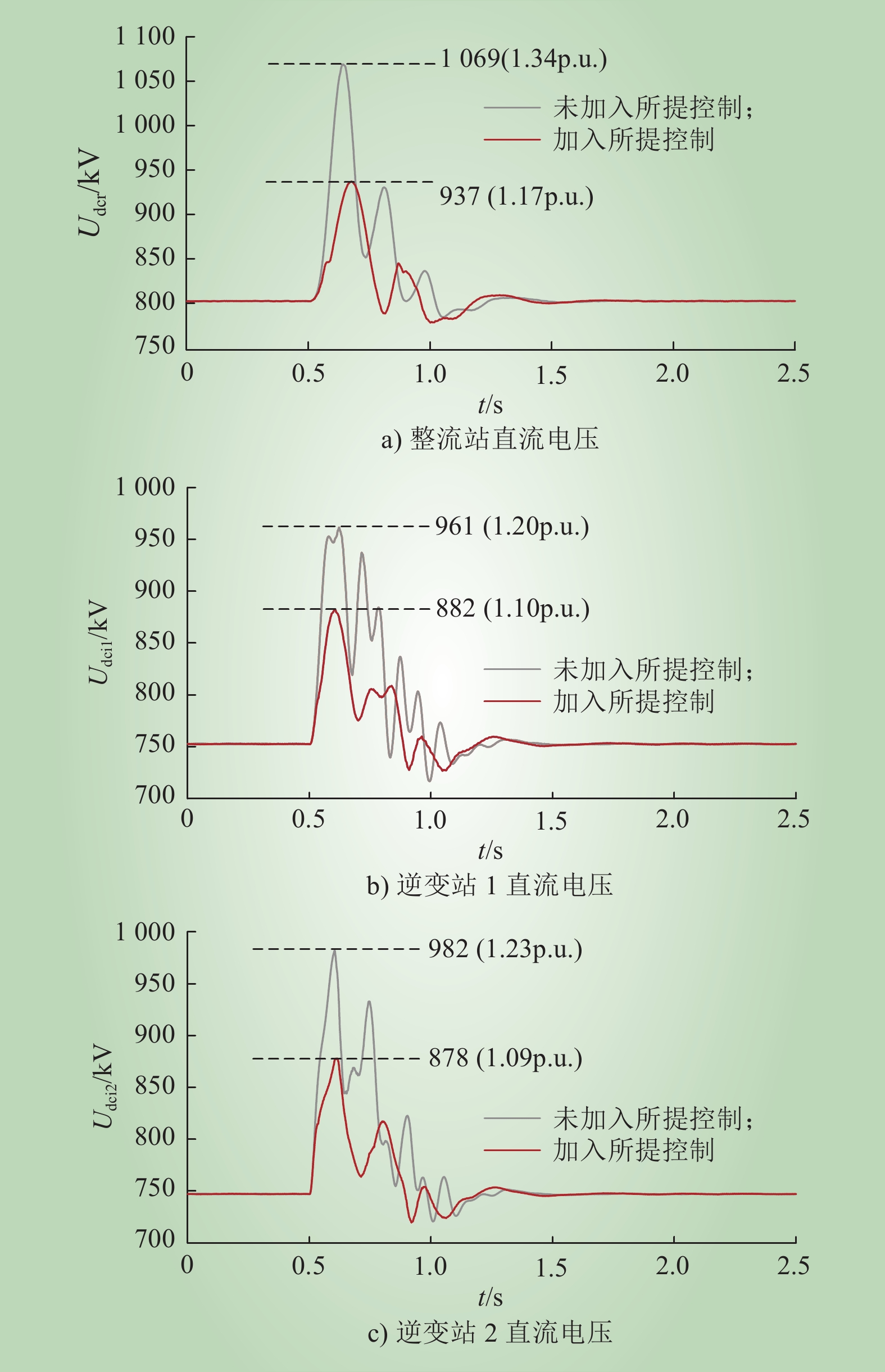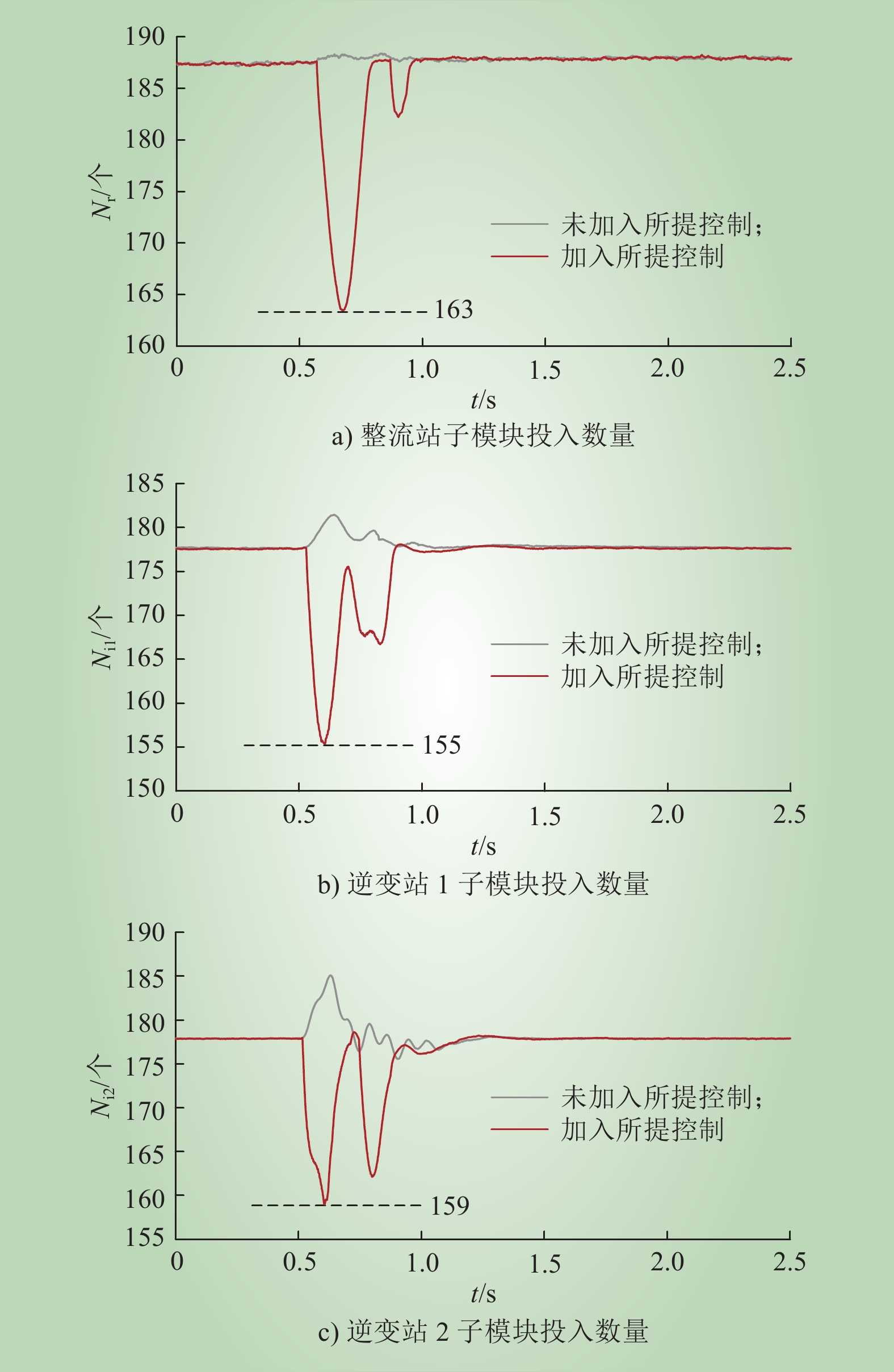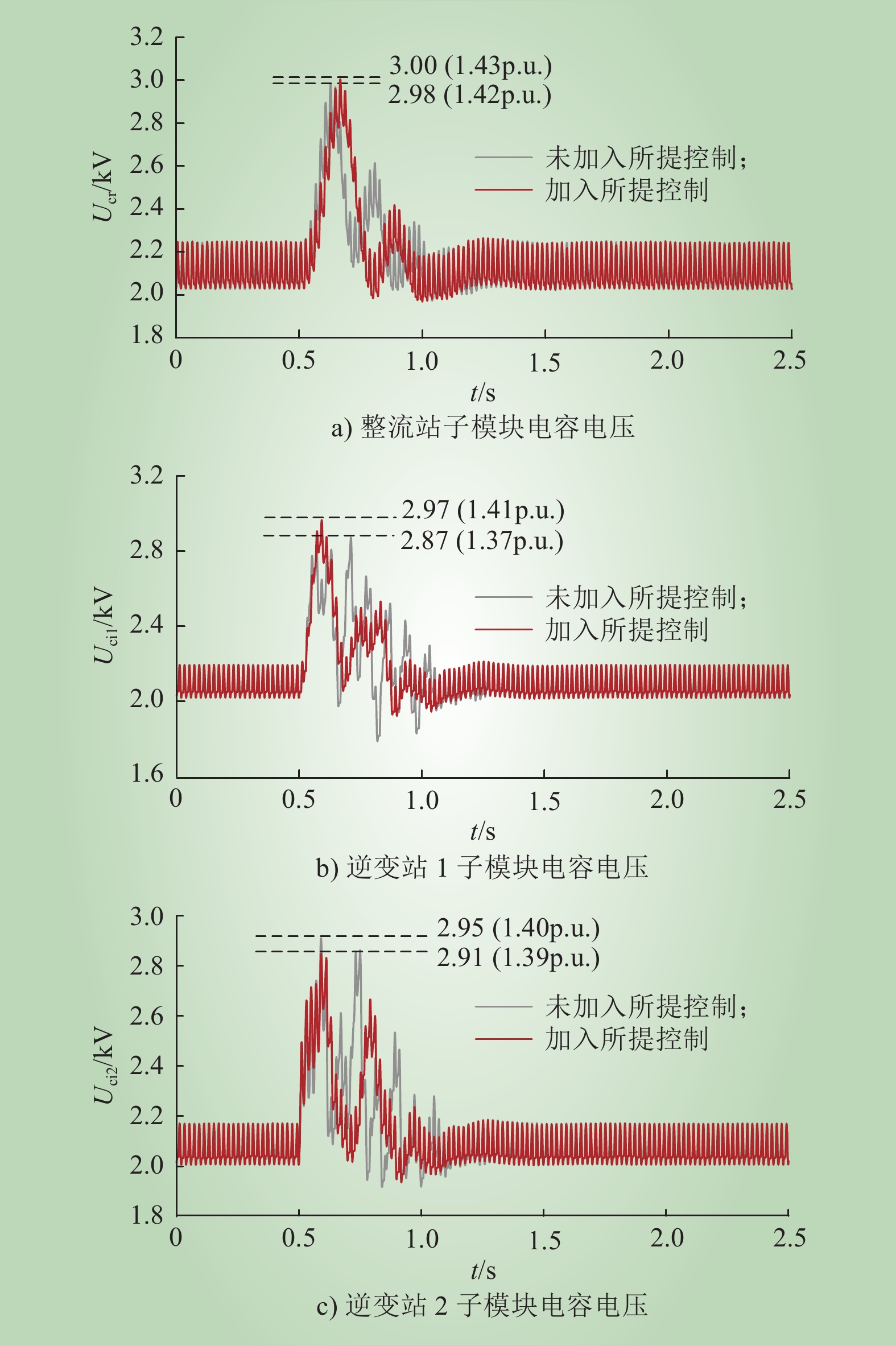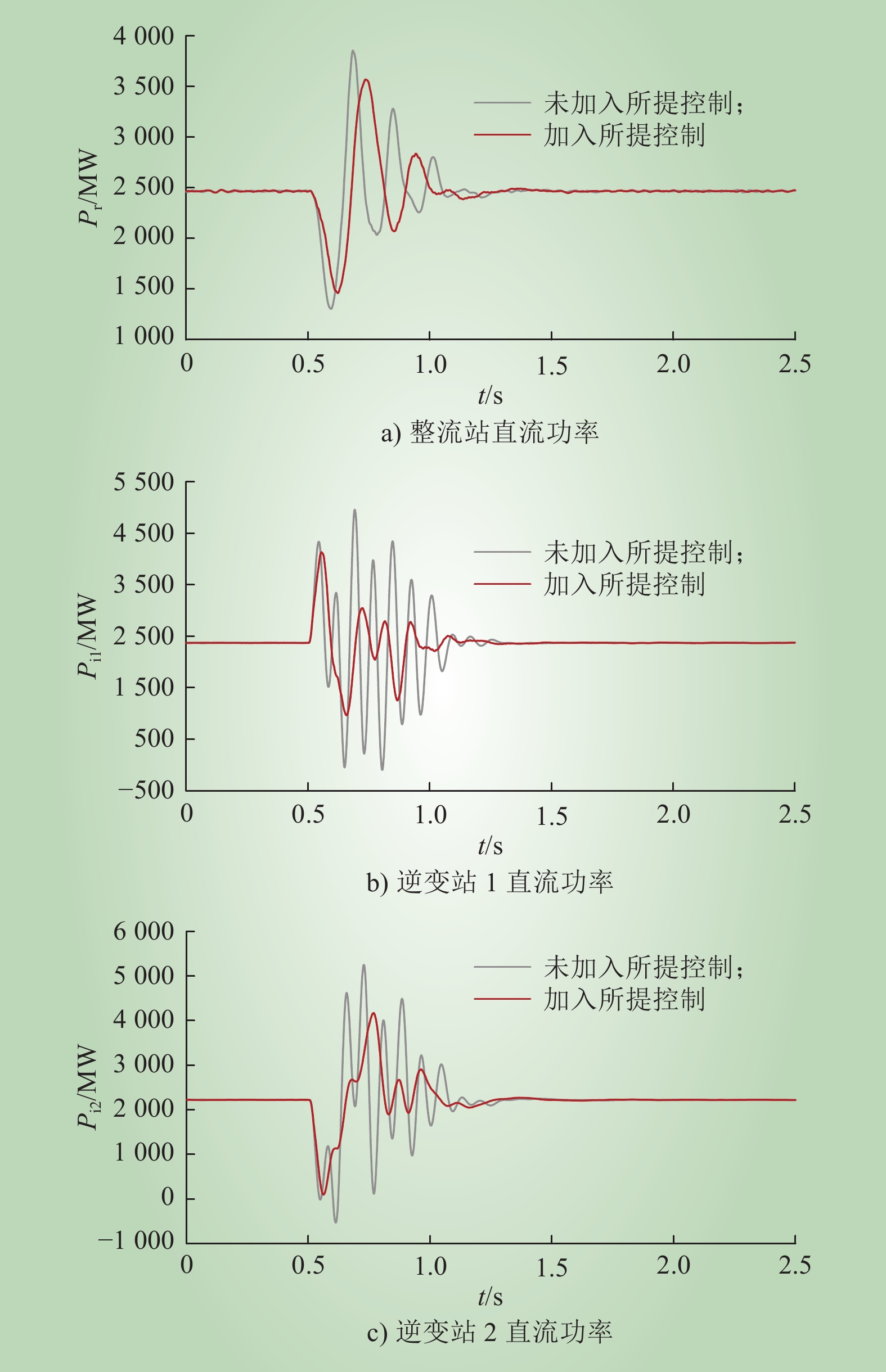| 1 |
赵畹君. 高压直流输电工程技术[M]. 2版. 北京: 中国电力出版社, 2011.
|
| 2 |
李惠玲, 王曦, 高剑, 等. 新型电力系统背景下西部送端直流电网方案构建[J]. 中国电力, 2023, 56 (5): 12- 21.
|
|
LI Huiling, WANG Xi, Gao Jian, et al. Scheme construction for sending end DC grids in western China under the background of new power system[J]. Electric Power, 2023, 56 (5): 12- 21.
|
| 3 |
徐政, 肖晃庆, 张哲任, 等. 柔性直流输电系统[M]. 2版. 北京: 机械工业出版社, 2017.
|
| 4 |
徐文哲, 张哲任, 徐政. 适用于大规模纯新能源发电基地送出的混合式直流输电系统[J]. 中国电力, 2023, 56 (4): 17- 27.
|
|
XU Wenzhe, ZHANG Zheren, XU Zheng. A hybrid HVDC topology suitable for large-scale pure clean energy power base transmission[J]. Electric Power, 2023, 56 (4): 17- 27.
|
| 5 |
邹常跃, 韦嵘晖, 冯俊杰, 等. 柔性直流输电发展现状及应用前景[J]. 南方电网技术, 2022, 16 (3): 1- 7.
|
|
ZOU Changyue, WEI Ronghui, FENG Junjie, et al. Development status and application prospect of VSC-HVDC[J]. Southern Power System Technology, 2022, 16 (3): 1- 7.
|
| 6 |
杨仁炘, 施刚, 蔡旭, 等. 风电-多端柔直送出系统电压源型控制[J]. 中国电机工程学报, 2020, 40 (5): 1498- 1509.
|
|
YANG Renxin, SHI Gang, CAI Xu, et al. Voltage source control of VSC-MTDC systems with wind farm integration[J]. Proceedings of the CSEE, 2020, 40 (5): 1498- 1509.
|
| 7 |
邓银秋, 汪震, 韩俊飞, 等. 适用于海上风电接入的多端柔直网内不平衡功率优化分配控制策略[J]. 中国电机工程学报, 2020, 40 (8): 2406- 2416.
|
|
DENG Yinqiu, WANG Zhen, HAN Junfei, et al. Control strategy on optimal redistribution of unbalanced power for offshore wind farms integrated VSC-MTDC[J]. Proceedings of the CSEE, 2020, 40 (8): 2406- 2416.
|
| 8 |
张福轩, 郭贤珊, 汪楠楠, 等. 接入新能源孤岛系统的双极柔性直流系统盈余功率耗散策略[J]. 电力系统自动化, 2020, 44 (5): 154- 160.
DOI
|
|
ZHANG Fuxuan, GUO Xianshan, WANG Nannan, et al. Surplus power dissipation strategy for bipolar VSC-HVDC system with integration of islanded renewable energy generation system[J]. Automation of Electric Power Systems, 2020, 44 (5): 154- 160.
DOI
|
| 9 |
JIANG S Q, XIN Y C, LI G Q, et al. A novel DC fault ride-through method for wind farms connected to the grid through bipolar MMC-HVDC transmission[J]. IEEE Transactions on Power Delivery, 2020, 35 (6): 2937- 2950.
DOI
|
| 10 |
杨仁炘, 张琛, 蔡旭, 等. 海上风电-柔直并网系统自同步电压源控制与电网故障穿越[J]. 中国电机工程学报, 2022, 42 (13): 4823- 4835.
|
|
YANG Renxin, ZHANG Chen, CAI Xu, et al. Voltage source control and fault ride-through of VSC-HVDC systems with offshore wind farm integration[J]. Proceedings of the CSEE, 2022, 42 (13): 4823- 4835.
|
| 11 |
TZELEPIS D, ROUSIS A O, DYSKO A, et al. Enhanced DC voltage control strategy for fault management of a VSC-HVDC connected offshore wind farm[C]//5th IET International Conference on Renewable Power Generation (RPG) 2016. London, UK. Institution of Engineering and Technology, 2016.
|
| 12 |
郭贤珊, 周杨, 梅念, 等. 张北柔直电网的构建与特性分析[J]. 电网技术, 2018, 42 (11): 3698- 3707.
|
|
GUO Xianshan, ZHOU Yang, MEI Nian, et al. Construction and characteristic analysis of Zhangbei flexible DC grid[J]. Power System Technology, 2018, 42 (11): 3698- 3707.
|
| 13 |
ABDALRAHMAN A, ISABEGOVIC E. DolWin1 - challenges of connecting offshore wind farms[C]//2016 IEEE International Energy Conference (ENERGYCON). Leuven. IEEE, 2016: 1–10.
|
| 14 |
许彬, 高冲, 张静. 应用于海上风电接入的VSC-HVDC系统主网侧交流故障穿越的新型直流耗能装置拓扑[J]. 中国电机工程学报, 2021, 41 (1): 88- 97, 400.
|
|
XU Bin, GAO Chong, ZHANG Jing. A novel DC chopper topology for grid side fault ride through in VSC-HVDC based offshore wind power connection[J]. Proceedings of the CSEE, 2021, 41 (1): 88- 97, 400.
|
| 15 |
谢晔源, 姚宏洋, 李海英, 等. 用于VSC-HVDC系统的模块化直串式直流耗能装置[J]. 电力自动化设备, 2021, 41 (7): 117- 123.
|
|
XIE Yeyuan, YAO Hongyang, LI Haiying, et al. Modular series-connection DC energy braking device for VSC-HVDC system[J]. Electric Power Automation Equipment, 2021, 41 (7): 117- 123.
|
| 16 |
赵东君, 郭春义, 刘博, 等. 抑制风电经柔直并网系统直流过电压的晶闸管型直流耗能拓扑[J]. 电力自动化设备, 2023, 43 (1): 100- 106.
|
|
ZHAO Dongjun, GUO Chunyi, LIU Bo, et al. Thyristor based DC energy dissipation topology for restraining DC overvoltage of wind power via flexible DC grid-connected system[J]. Electric Power Automation Equipment, 2023, 43 (1): 100- 106.
|
| 17 |
张浩博, 向往, 文劲宇. 应对受端交流故障的海上风电柔直并网系统主动能量控制方法[J]. 中国电机工程学报, 2023, 43 (12): 4600- 4614.
|
|
ZHANG Haobo, XIANG Wang, WEN Jinyu. Active energy control of offshore wind power MMC-HVDC system to handle AC faults of receiving-end power grid[J]. Proceedings of the CSEE, 2023, 43 (12): 4600- 4614.
|
| 18 |
郭贤珊, 梅念, 李探, 等. 张北柔性直流电网盈余功率问题的机理分析及控制方法[J]. 电网技术, 2019, 43 (1): 157- 164.
|
|
GUO Xianshan, MEI Nian, LI Tan, et al. Study on solution for power surplus in Zhangbei VSC-based DC grid mechanism analysis and control method[J]. Power System Technology, 2019, 43 (1): 157- 164.
|
| 19 |
杨艳晨, 郭剑波, 王姗姗, 等. 柔性直流电网直流过电压分析及控制策略研究[J]. 电网技术, 2019, 43 (5): 1586- 1592.
|
|
YANG Yanchen, GUO Jianbo, WANG Shanshan, et al. Analysis and control strategy of DC overvoltage in MMC-HVDC grid[J]. Power System Technology, 2019, 43 (5): 1586- 1592.
|
| 20 |
梅念, 苑宾, 李探, 等. 接入孤岛新能源电场的双极柔直换流站控制策略[J]. 电网技术, 2018, 42 (11): 3575- 3582.
|
|
MEI Nian, YUAN Bin, LI Tan, et al. Study on control strategy of bipolar VSC station connected to islanded renewable power plant[J]. Power System Technology, 2018, 42 (11): 3575- 3582.
|


